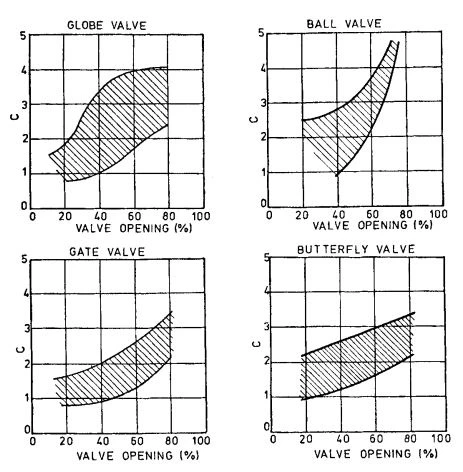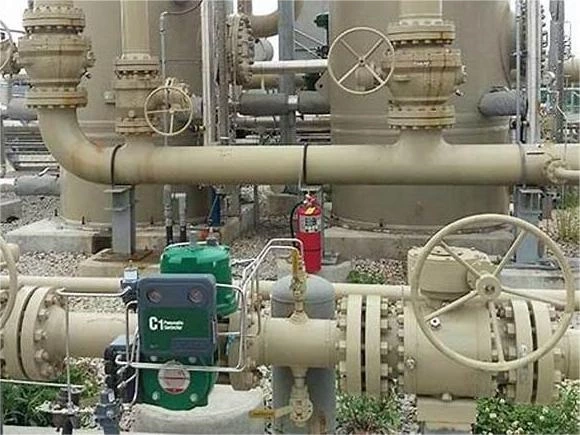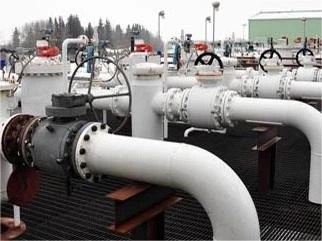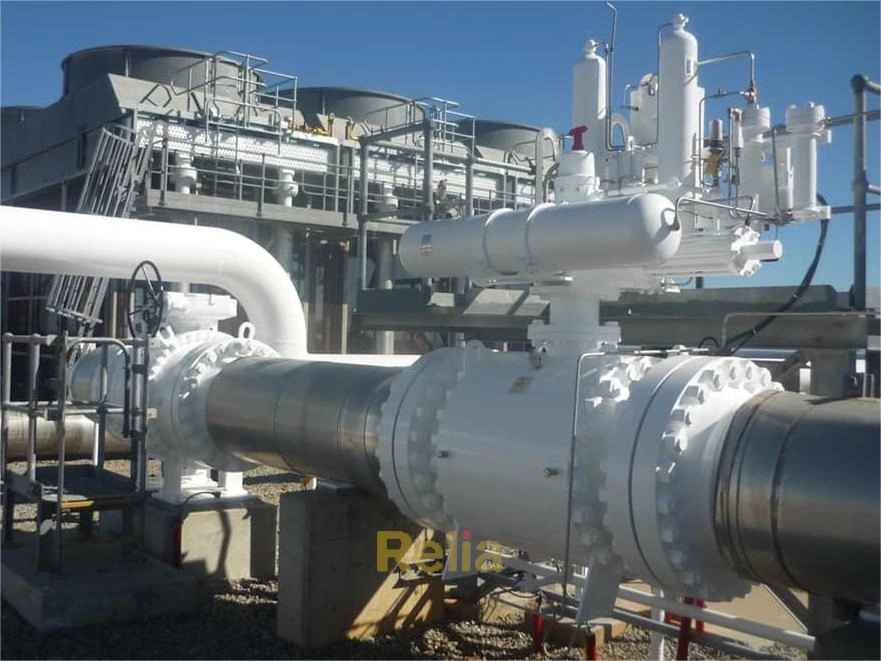Cavitation of Valves
When a liquid passes through a partially closed valve, the static pressure in the region of increasing velocity and in the wake of the closure member drops and may reach the vapor pressure of the liquid. The liquid in the low-pressure region then begins to vaporize and form vapor-filled cavities, which grow around minute gas bubbles and impurities carried by the liquid. When the liquid again reaches a region of high static pressure, the vapor bubbles collapse suddenly or implode. This process is called cavitation.
The impinging of the opposing liquid particles of the collapsing vapor bubble produces locally high but short-lived pressures. If the implosions occur at or near the boundaries of the valve body or the pipe wall, the pressure intensities can match the tensile strength of these parts. The rapid stress reversals on the surface and the pressure shocks in the pores of the boundary surface lead finally to local fatigue failures that cause the boundary surface to roughen until, eventually, quite large cavities form.
The cavitation performance of a valve is typical for a particular valve type, and it is customarily defined by a cavitation index, which indicates the degree of cavitation or the tendency of the valve to cavitate. This parameter is presented in the literature in various forms. The following is a convenient index used by the United States Bureau of Reclamation.21, 22
![]()
where
C = cavitation index
Pv = vapor pressure relative to atmospheric pressure (negative)
Pd = pressure in pipe 12 pipe diameters downstream of the valveseat Pu = pressure in pipe 3 pipe diameters upstream of the valve seat
Figure 2-11 displays the incipient cavitation characteristics of butter- fly, gate, globe, and ball valves, based on water as the flow medium. The characteristics have been compiled by the Sydney Metropolitan Water Sewerage and Drainage Board, and are based on laboratory observations and published data.23 Because temperature entrained air, impurities, model tolerances, and the observer's judgment influence the test results, the graphs can serve only as a guide.
The development of cavitation can be minimized by letting the pressure drop occur in stages. The injection of compressed air immediately down- stream of the valve minimizes the formation of vapor bubbles by raising the ambient pressure. On the debit side, the entrained air will interfere with the reading of any downstream instrumentation.

Figure 2-11. Incipient Cavitation Characteristics of Various “In-Line” Valves
A sudden enlargement of the flow passage just downstream of the valve seat can protect the boundaries of valve body and pipe from cavitation damage. A chamber with the diameter of 1.5 times the pipe diameter and a length of 8 times the pipe diameter including the exit taper has proved satisfactory for needle valves used in waterworks.24




